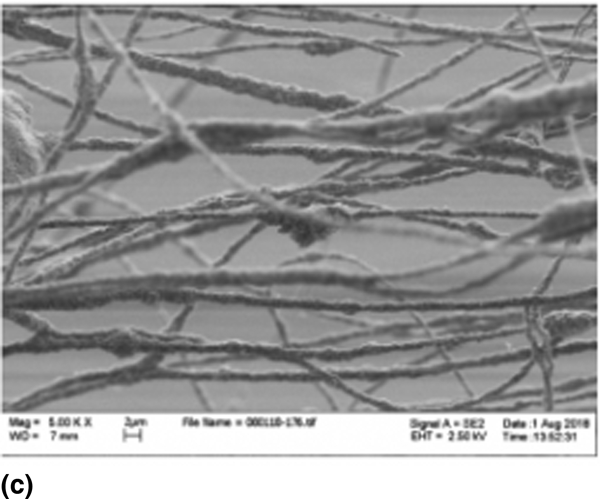Crossref Citations
This article has been cited by the following publications. This list is generated based on data provided by
Crossref.
Guo, Yuqing
Pan, Fengwen
Chen, Wenmiao
Ding, Zhiqiang
Yang, Daijun
Li, Bing
Ming, Pingwen
and
Zhang, Cunman
2021.
The Controllable Design of Catalyst Inks to Enhance PEMFC Performance: A Review.
Electrochemical Energy Reviews,
Vol. 4,
Issue. 1,
p.
67.
Guo, Yuqing
Yang, Daozeng
Li, Bing
Yang, Daijun
Ming, Pingwen
and
Zhang, Cunman
2021.
Effect of Dispersion Solvents and Ionomers on the Rheology of Catalyst Inks and Catalyst Layer Structure for Proton Exchange Membrane Fuel Cells.
ACS Applied Materials & Interfaces,
Vol. 13,
Issue. 23,
p.
27119.
Khandavalli, Sunilkumar
Sharma-Nene, Nisha
Kabir, Sadia
Sur, Samrat
Rothstein, Jonathan P.
Neyerlin, Kenneth C.
Mauger, Scott A.
and
Ulsh, Michael
2021.
Toward Optimizing Electrospun Nanofiber Fuel Cell Catalyst Layers: Polymer–Particle Interactions and Spinnability.
ACS Applied Polymer Materials,
Vol. 3,
Issue. 5,
p.
2374.
Yang, Daozeng
Guo, Yuqing
Tang, Haifeng
Yang, Daijun
Ming, Pingwen
Zhang, Cunman
Li, Bing
and
Zhu, Shaomin
2022.
Effect of rheological properties of catalyst slurry on the structure of catalyst layer in PEMFC.
International Journal of Hydrogen Energy,
Vol. 47,
Issue. 14,
p.
8956.
Xie, Yucheng
Guo, Yuqing
Yang, Daozeng
Yang, Daijun
Ming, Pingwen
Zhang, Cunman
and
Li, Bing
2023.
Effects of Electrostatic Force and Network Structure on the Stability of Proton-Exchange Membrane Fuel Cell Catalyst Ink.
ACS Applied Materials & Interfaces,
Vol. 15,
Issue. 15,
p.
19459.
Khandavalli, Sunilkumar
Chen, Yingying
Sharma‐Nene, Nisha
Rajan, Kashyap Sundara
Sur, Samrat
Rothstein, Jonathan P.
Reeves, Kimberley S.
Cullen, David A.
Neyerlin, K. C.
Mauger, Scott A.
and
Ulsh, Michael
2023.
Effect of isopropanol cosolvent on the rheology and spinnability of aqueous polyacrylic acid solutions.
Journal of Polymer Science,
Vol. 61,
Issue. 14,
p.
1495.
Waldrop, Krysta
Slack, John J.
Gumeci, Cenk
Parrondo, Javier
Dale, Nilesh
Reeves, Kimberly Shawn
Cullen, David A.
More, Karren L.
and
Pintauro, Peter N.
2023.
Electrospun Nanofiber Electrodes for High and Low Humidity PEMFC Operation.
Journal of The Electrochemical Society,
Vol. 170,
Issue. 2,
p.
024507.
Liu, Cheng
Luo, Maji
Zeis, Roswitha
Abel Chuang, Pa-Ya
Zhang, Ruiming
Du, Shaojie
and
Sui, Pang-Chieh
2024.
Fabrication of catalyst layer for proton exchange membrane water electrolyzer: I. Effects of dispersion on particle size distribution and rheological behavior.
International Journal of Hydrogen Energy,
Vol. 52,
Issue. ,
p.
1143.






